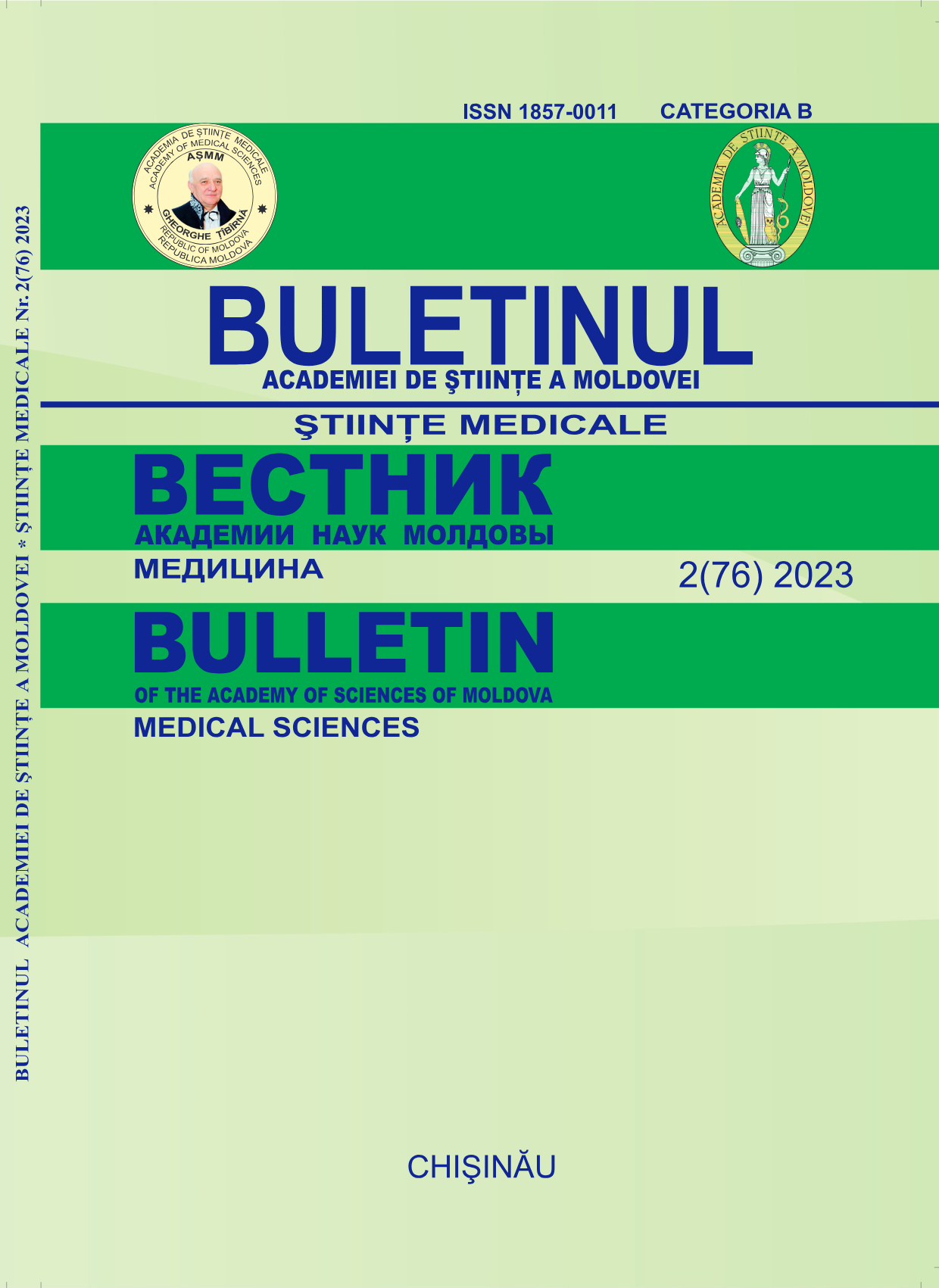The particularities of SARS-CoV-2 infection on onco-hematological diseases in children
DOI:
https://doi.org/10.52692/1857-0011.2023.2-76.13Keywords:
SARS-COV-2 infection, onco-hematological diseases, hemoblastosisAbstract
The particularities of SARS-CoV-2 infection on onco-hematological diseases in children. Introduction: Cancer in childrenis a rare disease among the pediatric population, representing approximately 0.5%- 1% of the total number of cancers. In the Republic of Moldova, anually, approximately 90 children are diagnosed with malignant tumors. The survival rate of children with cancer has improved considerably over time, but it remains a significant cause of morbidity and mortality among children. In oncological pathology, viral and bacterial infections acquired in the community can lead to a delay in chemotherapy treatment, which increases the risk of disease recurrence and resistance, thus increasing mortality. Children with hematologic malignancies generally have a more favorable prognosis for COVID-19 infection than adults with the same pathologies, but their risks of hospitalization, and death are much higher compared to the general pediatric populationThe purpose of the study: Determination of the infection rate of children with hemoblastosis with SARS Cov 2 infection, evolution and survival rate. Materials and methods: Thisis a retrospective study carried out in the Oncological Institute, hematology section for children, carried out during the SARS-CoV-2 pandemic March 2020-March 2022. Results: Among all patients hospitalized and treated in theOncological Institute, the children’s hematology section (125 patients) - 33 (26.4%) patients suffered SARS COV 2 infection, of which 3 had endured covid 2 times. The majority of patients - 26 patients (78.78%) had acute lymphoblastic leukemia, 1 (3.03%) Hodgkin’s lymphoma and 2 (6.06%) with Burkitt’s lymphomas, and non-Hodgkin’s lymphoma. Among the clinical symptoms, most children presented with 11 patients (30.5%), and fever> 38-10 patients (27.7%), 12 children (33.3%) did not present any symptoms, only the positive COVID-19 test. Among children diagnosed with COVID-19 infection, 10 (27%) cases of COVID were registered in children before or simultaneously with the basic hematological diagnosis, 25% (9 patients) were in the period of intermediate maintenance and we had one case ( 2.7%) in reinduction therapy and refractory therapy respectively. Analyzing the paraclinical data, a slight prevalence of the absolute number of lymphocytes compared to that of neutrophils was observed in patients who presented radiological signs of viral pneumonia. According to the imaging data, we had 7 confirmed cases of bilateral viral pneumonia, Rx1, 1 case of severe bilateral viral pneumonia-Rx4, which resulted in death, and one case of bilateral viral pneumonia due to leukemoid infiltration which also led to death, the child being decompensated approximately 2 months before the diagnosis of COVID-19. Conclusions: For most pediatric patients with hematologic malignancies, infection with COVID-19 does not result in severe progression. But this infection leads to the discontinuation of specific therapy, but the long-term consequences are notyet sufficiently studied.
References
Bhayana S, Kalra M, Sachdeva A. Covid-19 in pediatric hematology-oncology and stem cell transplant patients –The spectrum of illness, complications and comparison of first two waves. Pediatric Hematology Oncology Journal. 2022 Sep;7(3):96–102. doi: 10.1016/j.phoj.2022.05.003. Epub 2022 May 11. PMCID: PMC9090776.
Kosmeri C, Koumpis E, Tsabouri S, Siomou E, Makis A. Hematological manifestations of SARS-CoV-2 in children. Pediatr Blood Cancer. 2020;67(12): e28745. doi:10.1002/pbc.28745
Lu X, Zhange L, Du H, et al. SARS-CoV-2 Infection in Children. N Engl J Med. 2020; 382: 1663-1665.
Millen, G.C., Arnold, R., Cazier, JB. et al. Severity of COVID-19 in children with cancer: Report from the United Kingdom Paediatric Coronavirus Cancer Monitoring Project. Br J Cancer 124, 754–759
Sullivan M, Bouffet E, Rodriguez-Galindo C, et al. The COVID-19 Pandemic: A Rapid Global Response for Children With Cancer From SIOP, COG, SIOP-E, SIOP-PODC, IPSO, PROS, CCI, and St Jude Global. Pediatr Blood Cancer. 2020; 67: e28409.
Taub JW, Ge Y, Xavier AC. COVID-19 and childhood acute lymphoblastic leukemia. Pediatr Blood Cancer. 2020 Jul;67(7): e28400. doi: 10.1002/pbc.28400. Epub 2020 May 13. PMID: 32400927; PMCID: PMC7235492.
World Health Organization. (2021). CureAll framework: WHO global initiative for childhood cancer: increasing access, advancing quality, saving lives. World Health Organization. https://apps.who.int/iris/handle/10665/347370
Downloads
Published
License
Copyright (c) 2023 Bulletin of the Academy of Sciences of Moldova. Medical Sciences

This work is licensed under a Creative Commons Attribution 4.0 International License.



